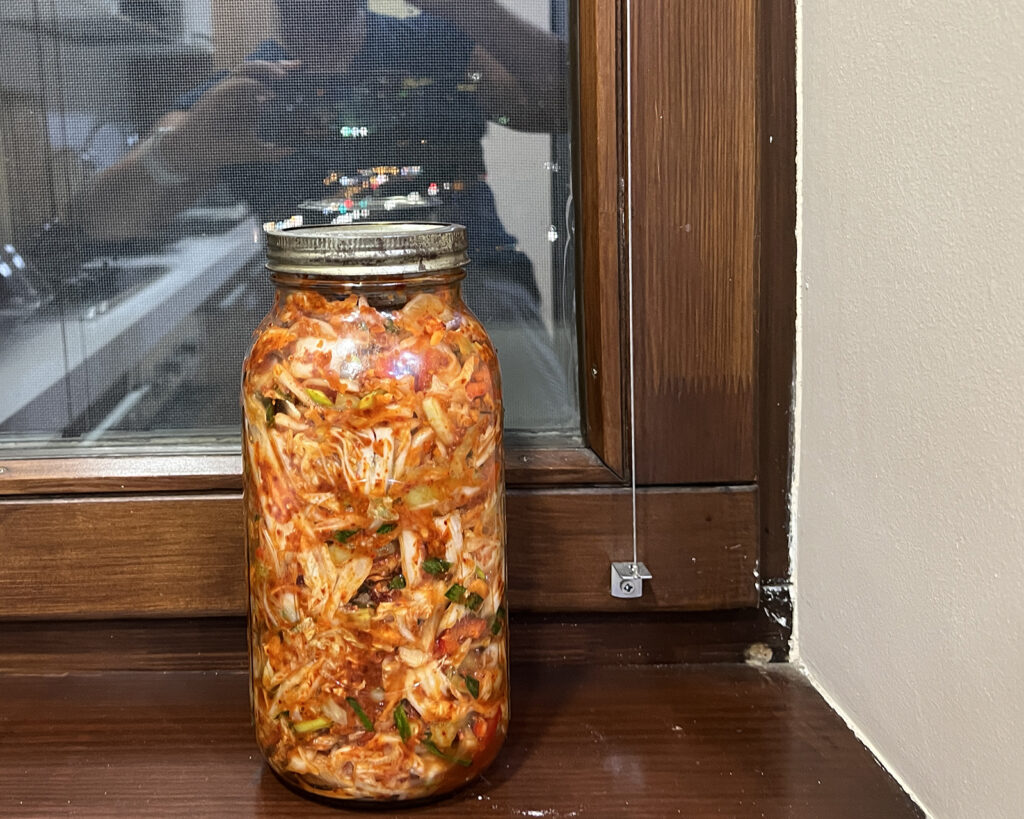Go to Tbilisi, Georgia to get deeper into kimchi making?
I’ve been making kimchi on and off for several years, empowered by YouTubers like Maangchi and a growing number of Korean cookbooks written in English (*Korean Home Cooking* is a favorite). But knowing how to do it with “son maht” has been elusive.
“Son maht” literally means hand + taste, i.e., cooking by feel.
How a person likes her kimchi is varied and personal. There’s no “right” answer about how spicy you like it, how fermented, how fishy. But I didn’t understand the nuances that would turn a follow-the-recipe batch of kimchi into a this-is-how-I-like-it kimchi…in other words, into my kimchi.
When Mrs. Greyhound asked me to help her make a batch of kimchi in Tbilisi, I said sure. I had Kate send me a photo of the recipe out of the book but soon realized that we were going to have to improvise. Mrs. G had some glutenous rice flour, gochugaru (Korean chili powder), and fish sauce in her pantry. We found napa cabbage in the local markets but no daikon radish or chives. And we only had table salt on hand, not the kosher or sea salt that the recipe called for.
I had to think—really think— about each step as we went. How should I adjust for the fact that table salt is much finer and saltier than kosher salt? What could be substituted instead of daikon?
In the end, I was quite happy with the results. Even more encouraging, I started developing a sense of a kimchi groove…my own version of sohn mat.
(One tip I’ll offer is that you want the wilted cabbage to taste good, with the right amount of saltiness, before you mix in the other ingredients.)

I came home and made another batch…this time, I didn’t even have to look at a recipe.

I can vouch for its deliciousness.
fantastic…I’m going to make it this winter. Sounds like the perfect winter project for me.